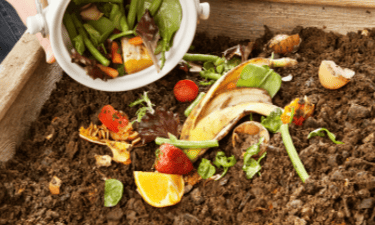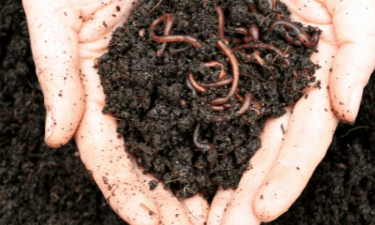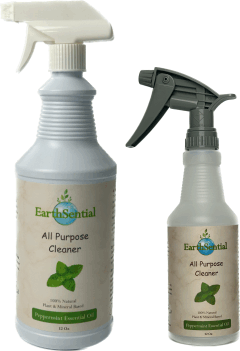Imagine turning your kitchen scraps, yard waste, and discarded paper into “black gold” for your plants, all while reducing your environmental footprint.
Starting a compost bin is your ticket to achieving nutrient rich soil.
The key to success lies in initiating your composting system correctly and mastering the art of choosing the right materials for your bin.
Starting a Compost bin? What’s Biodegradable vs. Compostable
Before starting a compost bin, it’s crucial to differentiate between biodegradable and compostable materials. While both terms sound environmentally friendly, they serve distinct purposes.
Compostable materials are those that break down quickly, adding valuable nutrients back into the soil. These materials are usually organic, such as most food waste, garden scraps, and paper products.
However, not everything biodegradable is also compostable. Biodegradable items may break down naturally but often over an extended period, rendering them unsuitable for your compost pile. For instance, certain plastics fall into this category, taking hundreds of years to decompose properly. To ensure a thriving compost, always refer to a reliable source for guidance on what to include.

Starting a Compost Bin Equals Nurient Rich Soil
Starting a compost bin is not just about reducing waste; it comes with a multitude of benefits:
1.) Reducing Food Waste: In the United States, food waste accounts for a significant portion of our overall waste. By composting, you play a vital role in reducing this waste and contributing to the goal of cutting food waste by 50% by 2030, as set by the USDA and the Environmental Protection Agency.
2.) Improving Soil: Compost, often referred to as “black gold” by gardeners, is a nutrient-rich soil that can enhance the health and vitality of your plants, both indoors and outdoors. It serves as a fantastic alternative to chemical fertilizers.
3.) Environmental Impact: Composting helps reduce methane gas emissions from food waste, making it an environmentally responsible choice that contributes to lower greenhouse gas emissions.
4.) Odor Control: With the bulk of food waste redirected to your compost pile, your trash can remains less smelly. Moreover, the natural composting process eliminates any odors, ensuring that the final compost soil smells fresh and earthy.
How to Start a Compost Bin
Ready to take the plunge into composting? Regardless of where you live, it’s a straightforward process:
1.) Choose Your Spot: You don’t need a dedicated bin or container; a suitable spot is all you require. Even a compost pile can work well, provided you ensure proper drainage and protection from excessive moisture.
2.) Select Your Container: If you prefer a bin, there are various options available, from repurposed trash cans to purpose-built compost bins. Decide on the size and location of your bin based on your living space.
3.) Layer Your Materials: For the best compost mixture, alternate layers of nitrogen-rich (green) and carbon-rich (brown) materials. Keep them damp but not soaking to aid decomposition.
4.) Maintenance: After setting up your compost bin, continue to add materials, turn the compost, and patiently wait. Your compost will be ready within a few weeks to a few months.
What to Include (and Exclude) in Your Compost Bin
Knowing what belongs in your compost bin is essential to its success. Categorize materials into two groups:
Green Compostable: These nitrogen-rich, wet materials include food scraps like coffee grounds, fruit and vegetable peelings, and clean eggshells, along with grass clippings and fresh grass.
Brown Compostable: These carbon-rich, dry materials encompass sawdust, shredded newspaper, sticks, dried leaves, egg cartons, and uncoated cardboard.
Alternate layers of green and brown materials in your bin, with larger brown layers. Begin with a dry brown layer and add green material on top to speed up decomposition. Maintain this layering process until your bin is full.

What to Avoid in Your Compost Bin
Certain items should never find their way into your compost pile to avoid potential issues:
-
Animal Products: Avoid adding meat, bones, dairy products, and fat, as they can attract pests and contain harmful microorganisms.
-
Pet Waste: While convenient, pet waste may harbor harmful organisms and should be kept out of your compost pile.
-
Diseased or Chemically Treated Plants: Plants treated with chemical fertilizers or affected by disease or pests should not be composted, as they can spread issues throughout the pile.
-
Colored Paper: Colored paper contains dyes that may disrupt the composting process, so it’s best to avoid adding it to your compost. Recycle colored paper instead.
-
Metals, Glass, and Plastic: These inorganic materials won’t break down in your compost pile and should be properly recycled.
If you’re uncertain about composting a particular item, it’s wise to seek guidance to prevent potential disruptions to your composting efforts.

Turning Your Compost
Regularly turning your compost pile is essential. This involves mixing up the materials using a pitchfork, trowel, or similar tool. Some composting bins have rotation features that make this task easier and even enjoyable.
Turning your compost introduces more oxygen, speeding up the decomposition process and improving efficiency for the microorganisms at work. Frequent turning results in fluffier compost.
The frequency of turning depends on the age of your compost pile. New piles require more frequent turning, usually at least once a week, while older, mature piles need less attention, requiring turning only a few times a month.

Composting in Small Spaces
If you have limited space, there are options for starting a compost bin:
-
Place a small composting bin on your balcony or another outdoor area suitable for your living situation.
-
Compost indoors using a five-gallon bucket stored in a utility closet or under the sink. Ensure proper drainage for the compost tea and keep the bin clean with plant-based cleaners to minimize odors.
-
Opt for vermicomposting by introducing worms to accelerate decomposition in smaller spaces.
If you find yourself with excess compost, consider sharing it with a local community garden to maximize the benefits of your efforts.
Using Compost Once It’s Ready
You’ll know your compost is ready when it loses its overripe odor and starts smelling earthy, resembling fresh dirt. The time it takes to reach this stage varies from weeks to months, depending on your location and climate.
The material at the bottom of your compost bin typically matures faster than the top layers, thanks to regular turning. Some bins allow access to the mature compost at the bottom without disturbing the top materials.
Once ready, you can use your compost in various ways:
-
Add a few tablespoons to your indoor potted plants.
-
Sprinkle it on top of your vegetable or flower beds (known as top dressing).
-
Apply it around your trees or large established plants.
-
Spread it on your lawn as natural fertilizer.
Think of your compost as a nutrient-rich, all-natural fertilizer that will boost the health and vitality of your plants, both indoors and outdoors.
Final Thoughts About How to Start a Compost Bin
Composting is a simple yet highly effective way to reduce household waste. With minimal effort, you’ll create a nutrient-rich fertilizer for your plants while contributing to a more sustainable environment.
To further reduce waste, consider transitioning to natural plant-based cleaning products, reducing your exposure to unwanted chemicals and enjoying delightful fresh scents.
Refillable bottles can also help minimize single-use plastic waste, aligning perfectly with your goal of reducing waste without compromising cleaning effectiveness. It’s a holistic approach to cleaner living, benefiting both your home and the planet.


Peppermint All Purpose Cleaner
A unique and refreshing cleaning solution that utilizes the power of mint essential oil to effectively clean and deodorize various surfaces in your home.
All Natural & Plant-based Ingredients
Safe to use around children and pets, and is a great option for those who are looking to reduce their environmental impact and avoid harsh chemicals.
Cleans, degreases, deodorizes, removes stains & aromatherapy benefits.
Size: 16oz or 32oz Scent: Mint
Lemongrass’s

Journey in Organic Farming
by Bonnie Pellerin Ι June 16, 2023 Ι 5 Min Read
Organic Choices

for a Healthier Planet and You
by Bonnie Pellerin Ι Sept 28, 2023 Ι 5 Min Read
The Power of Nature

How Peppermint, Clove and Thyme Work Together to Repel Rodents
by Minus Bite Ι May 3, 2023
Get the EarthSential Newsletter
Good deals, great advice & essentially necessary.

